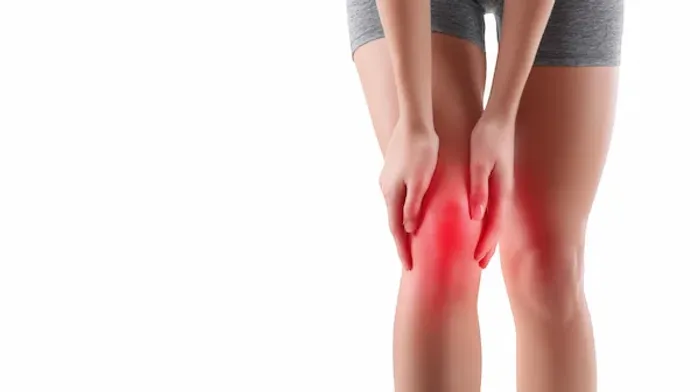Taming the Ache: Your Guide to Managing Joint and Body Pains in a Post-Pandemic World
Know about the body pains and managing joint ache, post-COVID era, common causes, how to tackle pain, treatment strategies, including medications and home remedies.

Written by Dr. Shaik Abdul Kalam
Reviewed by Dr. Dhankecha Mayank Dineshbhai MBBS
Last updated on 10th Oct, 2025

Introduction
The COVID-19 pandemic reshaped our lives in countless ways, and for many, one of the most unexpected consequences has been a rise in nagging joint and body pains. The shift to remote work, increased stress levels, and reduced physical activity created a perfect storm for musculoskeletal discomfort. If you've found yourself rubbing a sore shoulder, dealing with a stiff lower back, or experiencing unfamiliar aches, you're certainly not alone. This guide is designed to help you understand why these pains have emerged and provide practical, actionable strategies for coping with them. We'll explore the link between pandemic lifestyle changes and physical discomfort, and equip you with a toolkit to find relief and reclaim your comfort.
Understanding the Sources: Common Causes of Pandemic-Era Body Pains
Before diving into solutions, it's crucial to understand the "why" behind the pain. The pandemic didn't create new types of pain, but it amplified existing vulnerabilities and introduced new triggers. The primary culprits are largely tied to how our daily routines were disrupted.
Consult a Top General Practitioner for Personalised Advice
The Sedentary Shift: How WFH Wreaked Havoc on Your Posture
The rapid transition to working from home (WFH) meant trading ergonomic office chairs for dining room tables and sofas. This led to a significant increase in sedentary behaviour. Prolonged sitting, especially in poor postures, places immense strain on the spine, neck, and shoulders. The hip flexors shorten, the core muscles weaken, and the discs in your spine are compressed, leading to common complaints like lower back pain from sitting. This lack of movement also causes joints to become stiff, as synovial fluid (which lubricates joints) isn't circulated effectively.
Stress and Inflammation: The Mind-Body Pain Connection
Chronic stress is a powerful pain trigger. The uncertainty and anxiety of the pandemic caused cortisol levels to soar. While cortisol is anti-inflammatory in short bursts, chronically elevated levels can dysregulate the immune system, leading to increased systemic inflammation. This inflammation can exacerbate conditions like arthritis and contribute to general muscle tension and body aches. This creates a vicious cycle: pain causes stress, and stress, in turn, worsens the pain.
Post-COVID Syndrome: When Viral Illness Leads to Lingering Pain
A significant number of individuals who contracted COVID-19 report lingering symptoms, collectively known as Long COVID. Among these, joint pain, muscle aches, and fatigue are frequently reported. The exact mechanisms are still being studied, but are believed to involve persistent inflammation and an overactive immune response. If your body pains began or dramatically worsened after a COVID-19 infection, it could be related to this syndrome.
Your At-Home Arsenal: Effective Strategies for Pain Relief
The good news is that you can take proactive steps to manage and alleviate these pains from the comfort of your home. A multi-faceted approach is often the most effective.
Ergonomic Wins: Setting Up a Pain-Free Workspace
Investing in your workspace is investing in your health. The goal of ergonomics is to fit your environment to your body, not the other way around.
Chair: Use a chair that supports the natural curve of your spine. Your feet should be flat on the floor, with knees at or slightly below hip level.
Screen: Your monitor should be at eye level, about an arm's length away, to prevent neck strain.
Keyboard and Mouse: Keep them close enough so you don't have to reach, allowing your wrists to remain straight.
Quick Checklist for an Ergonomic Home Office
Top of the monitor at eye level.
Elbows bent at 90-110 degrees.
Lower back supported by chair.
Thighs parallel to the floor.
Take a 5-minute break to stand and stretch every hour.
Movement as Medicine: Safe Exercises for Stiff Joints
Counterintuitive as it may seem, movement is one of the best home remedies for stiff joints. Low-impact exercises can strengthen the muscles that support your joints, improve flexibility, and boost circulation.
Walking: A simple 20-30 minute daily walk can work wonders.
Yoga and Stretching: Focuses on improving flexibility and range of motion. Poses like Cat-Cow are excellent for spinal mobility.
Strength Training: Building strength in your core, glutes, and back provides better support for your joints, reducing pain. Bodyweight exercises like squats and planks are a great start.
Kitchen Cabinet Remedies: Anti-Inflammatory Foods and Hydration
Your diet plays a key role in managing inflammation. An anti-inflammatory diet for pain includes:
Omega-3 Fatty Acids: Found in fatty fish (salmon, mackerel), walnuts, and flaxseeds.
Turmeric and Ginger: Contain powerful anti-inflammatory compounds (curcumin, gingerols).
Colourful Fruits and Vegetables: Rich in antioxidants that combat oxidative stress.
Additionally, staying well-hydrated is essential. Water helps keep the cartilage in your joints soft and pliable, acting as a shock absorber.
When to Seek Professional Help: Don't Ignore These Red Flags
While self-care strategies are effective for many, some symptoms warrant professional medical advice. It's important to listen to your body. If your condition does not improve after trying these methods for a couple of weeks, or if you experience any of the following, it's time to consult a doctor:
Severe, unrelenting pain that prevents sleep or daily activities.
Pain accompanied by significant swelling, redness, or warmth around a joint.
Numbness, tingling, or weakness in your limbs.
Unexplained weight loss or fever along with joint pain.
Pain following a significant injury or fall.
If symptoms persist, consult a doctor online with Apollo24|7 for further evaluation. They can provide a preliminary assessment, recommend diagnostics, or refer you to a specialist like a rheumatologist or orthopedist. For certain conditions, they may suggest specific lab tests, and Apollo24|7 offers convenient home collection for tests like vitamin D or inflammatory markers (e.g., CRP, ESR), which can be crucial in diagnosing the root cause of persistent pain.
Conclusion
The pandemic has been a challenging chapter, but it has also taught us the importance of proactive health management. The increase in joint and body pains is a direct consequence of our changed lifestyles, but it is not an irreversible one. By understanding the causes—from poor ergonomics to chronic stress and implementing a consistent routine of movement, ergonomic adjustments, and mindful nutrition, you can significantly reduce discomfort and improve your quality of life. Remember, managing pain is a journey, not a destination. Start with small, sustainable changes and be patient with your progress. If your efforts aren't enough, modern healthcare is more accessible than ever. Book a physical visit to a doctor with Apollo24|7 to get personalised care and a clear path forward towards a more comfortable, active life.
Consult a Top General Practitioner for Personalised Advice
Consult a Top General Practitioner for Personalised Advice

Dr. Rajib Ghose
General Physician/ Internal Medicine Specialist
25 Years • MBBS
East Midnapore
VIVEKANANDA SEBA SADAN, East Midnapore

Dr. Tapabrata Ray
General Physician/ Internal Medicine Specialist
4 Years • MBBS,DGM,CPMeC,ACMDC
Kolkata
MCR SUPER SPECIALITY POLY CLINIC & PATHOLOGY, Kolkata

Dr. Sougata Kumar
General Practitioner
8 Years • MBBS
East Midnapore
VIVEKANANDA SEBA SADAN, East Midnapore

Dr. Bulbul Biswas
General Practitioner
35 Years • MBBS, Diploma in Maternity and child welfare
Kolkata
HERSTEL CARE CLINIC, Kolkata

Dr. Suvayan Sadhu
General Practitioner
2 Years • MBBS
Kolkata
GRD POLYCLINIC, Kolkata
More articles from Pain Management
Frequently Asked Questions
1. What is the difference between muscle pain and joint pain?
Muscle pain (myalgia) typically feels like a deep ache or soreness in the soft tissues and is often related to overuse or tension. Joint pain (arthralgia) is felt within or around a joint, often accompanied by stiffness, swelling, and is worse with movement. It's commonly associated with conditions like arthritis.
2. Can dehydration really cause body aches?
Yes. Dehydration can lead to muscle cramps and headaches. Proper hydration is essential for delivering nutrients to joints and flushing out toxins. When you're dehydrated, your body's tissues are less lubricated, which can exacerbate feelings of stiffness and pain.
3. I have arthritis. Are there specific exercises I should avoid?
Generally, high-impact activities like running or jumping can be hard on weight-bearing joints. It's best to focus on low-impact exercises like swimming, cycling, and yoga. However, it's always recommended to consult with a physiotherapist or your doctor for a personalised exercise plan tailored to your specific type of arthritis and its severity.
4. How long does post-COVID joint pain usually last?
The duration of post-COVID symptoms varies greatly from person to person. For some, it may last a few weeks; for others, it can persist for months. This is known as Long COVID. If you are experiencing persistent pain after a COVID-19 infection, it is important to seek medical guidance for proper management.
5. Are over-the-counter pain relievers safe for long-term use?
While OTC medications like ibuprofen (NSAIDs) or acetaminophen can be effective for short-term relief, long-term daily use can have side effects, such as stomach, kidney, or liver problems. They should be used as directed, and it's advisable to speak with a doctor if you find yourself needing them consistently for more than 10 days.


